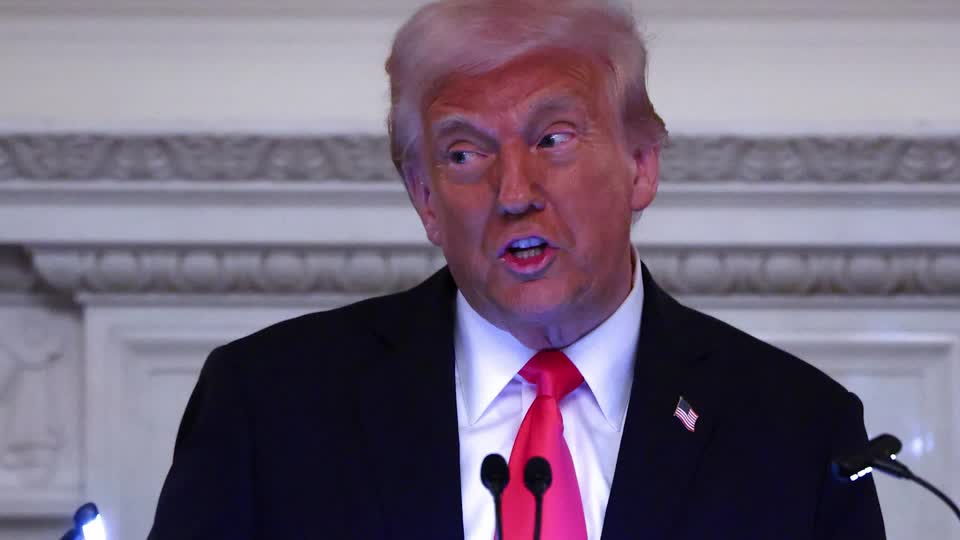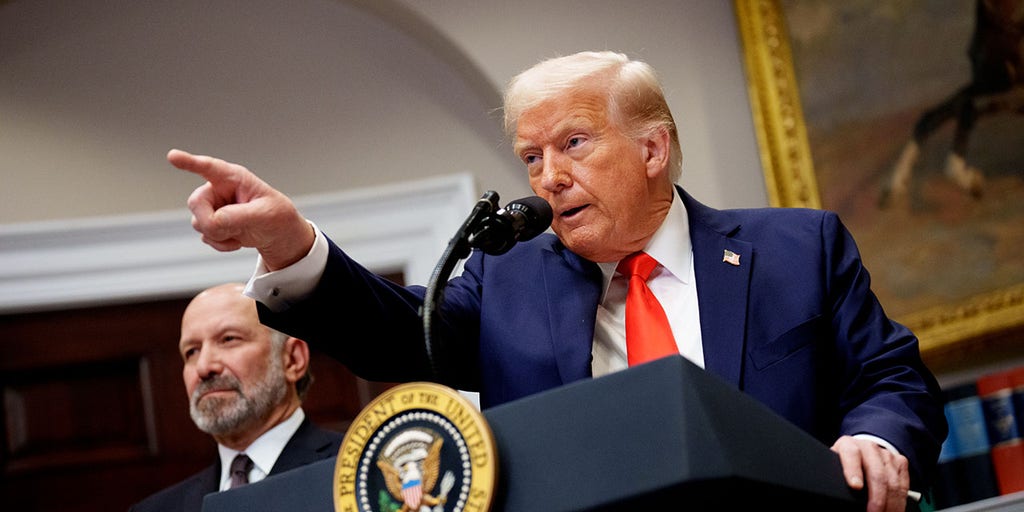Trade Tensions Rise: Trump's Tariff Bombshell Set to Shake Global Markets
Business
2025-03-28 17:44:00Content

Global Economic Spotlight: Trade, Jobs, and Monetary Policy in Focus
Trump's Trade Strategy Takes Center Stage
The business world is eagerly anticipating President Donald Trump's comprehensive trade policy reveal on April 2. While initial fears of sweeping tariffs have been somewhat tempered by hints of a more nuanced approach, investors remain cautiously uncertain about the potential economic implications.
U.S. Labor Market Under Microscope
The upcoming non-farm payrolls report on April 4 will provide critical insights into the U.S. employment landscape. Analysts predict a slowdown in job growth for March, with particular attention on potential workforce reductions driven by tech leaders like Elon Musk.
European Central Bank's Rate Decision Hangs in Balance
Euro zone inflation data will be a key indicator this week, with markets now pricing an 80% probability of an interest rate cut in April. Financial experts are already speculating about future monetary policy, with some institutions like BNP Paribas anticipating potential rate hikes in 2025.
Australia Weighs Monetary Policy Carefully
The Reserve Bank of Australia is expected to maintain current interest rates, despite growing market expectations of a potential rate cut in May. Upcoming consumer price data on April 30 could prove pivotal in shaping the bank's decision-making process.
Global Economic Pulse: Navigating Tariffs, Jobs, and Monetary Policies in a Shifting Landscape
In an era of unprecedented economic complexity, global markets stand at a critical crossroads, where policy decisions, trade tensions, and monetary strategies are reshaping the international financial ecosystem. The interconnected nature of today's economic landscape demands a nuanced understanding of emerging trends and potential disruptions that could fundamentally alter investment strategies and economic trajectories.Unraveling the Economic Tapestry: Critical Insights for Investors and Policymakers
Trade Policy Transformation: The Tariff Conundrum
The impending trade policy announcement represents a pivotal moment for international economic relations. President Trump's potential tariff strategy signals a profound shift in global trade dynamics, creating an atmosphere of anticipation and uncertainty among investors and multinational corporations. While initial signals suggest a potentially targeted approach, the underlying complexity of international trade negotiations remains a critical factor. Sophisticated economic analysts are closely monitoring potential ripple effects across various sectors. The delicate balance between protectionist measures and global economic integration presents a multifaceted challenge that extends far beyond simple economic calculations. Geopolitical considerations, supply chain resilience, and long-term strategic positioning are emerging as crucial elements in understanding the broader implications of potential tariff implementations.Labor Market Dynamics: Decoding Employment Trends
The upcoming non-farm payrolls report represents more than a mere statistical snapshot; it serves as a comprehensive diagnostic tool for assessing the United States' economic health. Expectations of slowed employment growth reflect a nuanced economic environment characterized by technological disruption, workforce transformation, and evolving industry paradigms. Elon Musk's workforce reduction strategies introduce an additional layer of complexity to the employment landscape. These strategic workforce adjustments potentially signal broader technological and organizational shifts that could fundamentally reshape traditional employment models. Investors and policymakers must navigate these intricate dynamics, understanding that workforce trends are increasingly influenced by technological innovation and strategic corporate restructuring.European Monetary Policy: Inflation and Interest Rate Strategies
The Euro zone's inflation data represents a critical inflection point for monetary policy deliberations. With markets currently pricing an approximately 80% probability of an interest rate cut, the European Central Bank finds itself at a strategic crossroads. Financial institutions like BNP Paribas are already projecting potential rate hikes in the upcoming year, indicating a complex and dynamic monetary policy environment. These potential monetary adjustments reflect broader macroeconomic challenges, including post-pandemic economic recovery, geopolitical tensions, and structural economic transformations. The intricate interplay between inflation, monetary policy, and global economic trends demands sophisticated analytical approaches and adaptive strategic frameworks.Australian Monetary Policy: Navigating Economic Uncertainties
The Reserve Bank of Australia's potential interest rate decisions exemplify the delicate balance central banks must maintain in responding to evolving economic conditions. While current expectations suggest maintaining existing rates, the possibility of a future rate cut remains significant, with market sentiment indicating approximately a 70% probability of such a move. The upcoming quarterly consumer price numbers will serve as a crucial determinant in shaping monetary policy decisions. This scenario underscores the complex, data-driven approach modern central banks employ in managing economic stability and promoting sustainable growth. The global economic landscape continues to evolve at an unprecedented pace, demanding continuous adaptation, strategic foresight, and a comprehensive understanding of interconnected economic systems.RELATED NEWS








